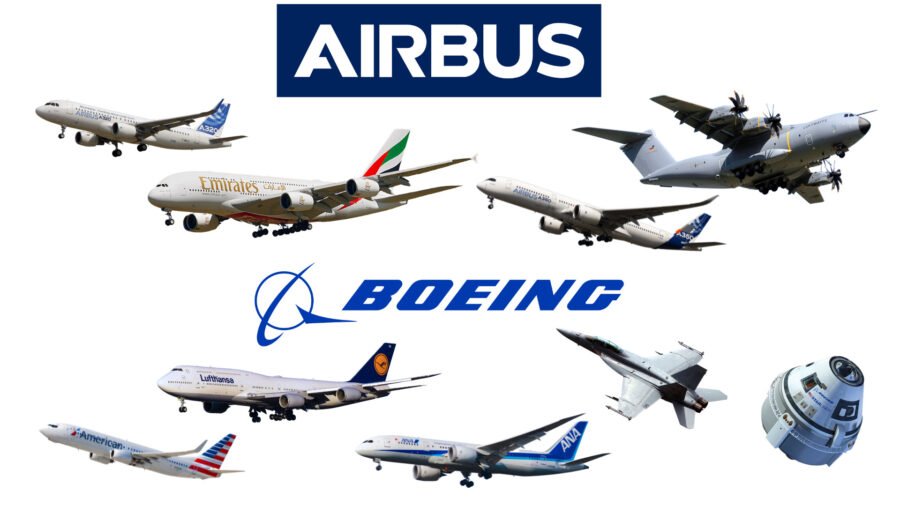In the realm of commercial aircraft manufacturing, two behemoths reign supreme: Airbus and Boeing. These industry titans have been engaged in a fierce rivalry for decades, constantly striving to outdo one another in innovation, technology, and market dominance. As the primary players in a multi-billion-dollar industry that shapes global transportation, understanding the dynamics of the Airbus-Boeing rivalry is essential.
A Brief History
The story of Airbus and Boeing is one of competition, collaboration, and technological advancement. Airbus, a consortium of European aerospace companies, was established in 1970, aiming to challenge the dominance of American manufacturers like Boeing in the commercial aviation market. Over the years, Airbus has grown into a formidable force, with its headquarters in Toulouse, France.
Boeing, on the other hand, has a longer history, dating back to 1916. Initially focusing on military aircraft, Boeing ventured into commercial aviation in the 1950s with the introduction of the iconic Boeing 707. Since then, Boeing has been a prominent player in the industry, with its headquarters in Chicago, Illinois.
Market Dominance
Both Airbus and Boeing compete across various segments of the commercial aircraft market, from single-aisle narrow-body jets to wide-body, long-range aircraft. The competition between the two giants is particularly intense in the lucrative market for medium and long-range jets, where their flagship models—the Airbus A320 family and the Boeing 737 series—vie for dominance.
In recent years, Airbus has gained ground on Boeing, driven by the success of its A320neo (New Engine Option) family of aircraft, which boasts improved fuel efficiency and lower operating costs. This success has propelled Airbus to challenge Boeing’s long-standing dominance in the narrow-body market.
Conversely, Boeing has maintained its supremacy in the wide-body market with its popular 787 Dreamliner and 777 series. However, the company faced a significant setback with the grounding of its 737 MAX aircraft following two fatal crashes in 2018 and 2019. The MAX crisis tarnished Boeing’s reputation and provided Airbus with an opportunity to capitalize on its rival’s misfortune.
Technological Innovation
Innovation is at the heart of the Airbus-Boeing rivalry, driving advancements in aircraft design, materials, and manufacturing processes. Both companies invest heavily in research and development to stay ahead of the curve and meet the evolving needs of airlines and passengers.
Airbus has pioneered technologies such as fly-by-wire flight controls, which provide smoother handling and greater efficiency, as well as the extensive use of composite materials to reduce weight and improve fuel efficiency. Meanwhile, Boeing has focused on innovations like the use of lightweight carbon fiber composites in its Dreamliner series, which offer significant fuel savings and enhanced passenger comfort.
Global Impact
The competition between Airbus and Boeing extends far beyond the confines of the aerospace industry, with ripple effects felt across the global economy. The success of these manufacturers not only drives innovation and technological advancement but also supports millions of jobs worldwide, from aerospace engineers to airline pilots.
Moreover, the aircraft produced by Airbus and Boeing serve as vital links in the global transportation network, facilitating trade, tourism, and economic growth. Their aircraft connect cities and countries, enabling people and goods to travel farther and faster than ever before.
The Future of Flight
Looking ahead, both Airbus and Boeing face a host of challenges and opportunities. Environmental concerns, such as carbon emissions and noise pollution, are driving demand for more fuel-efficient and eco-friendly aircraft. Additionally, the rise of electric and hybrid propulsion systems poses both challenges and opportunities for traditional manufacturers.
Furthermore, the emergence of new competitors, particularly from China and Russia, adds another layer of complexity to the Airbus-Boeing rivalry. As these new players enter the market with ambitious plans to challenge the established order, Airbus and Boeing must continue to innovate and adapt to maintain their competitive edge.
In conclusion, the rivalry between Airbus and Boeing is a dynamic and multifaceted phenomenon that shapes the landscape of the aerospace industry. As these two giants continue to push the boundaries of innovation and technology, the future of flight promises to be both exciting and transformative.

